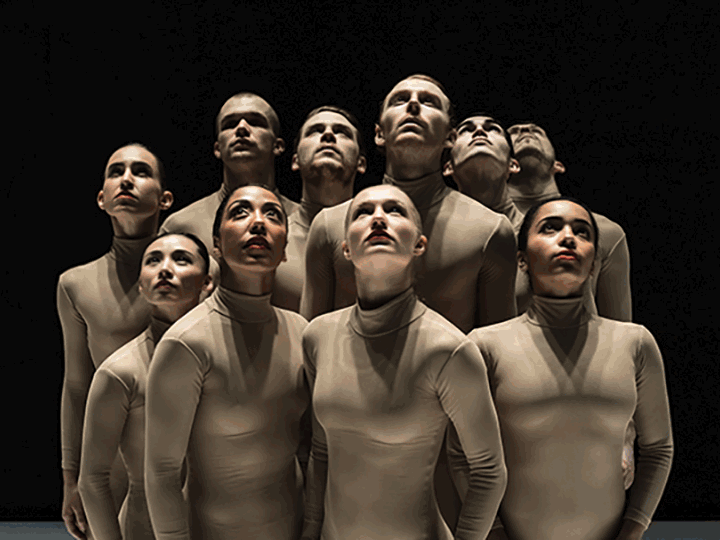Review: Out of loss of flamenco star comes the magical ‘Toro’ at Irvine Barclay Theatre
“Toro” is a case study in how the show can go on — despite the loss of one of its two stars — and make magic anyway.
Presented Tuesday night at the Irvine Barclay Theatre, “Toro” is an offshoot of “Torobaka,” a performance created by kathak dance virtuoso Akram Khan and flamenco maestro Israel Galvan. A recent injury sidelined Galvan just as the show was about to come to North America, and Khan decided to revamp the hourlong program rather than scrub it.
And so “Torobaka” — a name metaphorically representing Spain’s reverence for the bull and India’s veneration of the cow — was turned into “Toro” on Tuesday. The Barclay went forward with the show, whereas other presenters, including the Center for the Art of Performance at UCLA, chose to cancel.
See more of Entertainment’s top stories on Facebook >>
Theater is a risky enterprise. In this case, the wager pays off.
“Toro” is storyless. Its action proceeds like a drum circle, with Khan and four musicians trading the lead. Therein lies the key to how this show was saved: The two singers and two instrumentalists are nearly equal partners with the dancer. And with its shifting duets and surprising solos, “Toro” is always messing with audience expectations.
Khan is indisputably the standout, and he is a fireball of energy. Most remarkable is how he engages every muscle, every joint and limb as he explores how the body makes music. He drums his bare feet in traditional kathak styling yet also unconventionally taps his head to the floor with delicate and perfect timing. He wriggles and curls his fingers in smoothly pulsing curlicues. While he’s bending over, his arms thrust forward and become graceful long horns; he suddenly resembles a bull. Then, there are his ferocious, evenly synched turns, abrupt sideways jumps, and leaps that end in frisky floor rolls. He topples face-forward like a tree cut down, a mind-blowing “How’d he do that one?”
Indian percussionist B.C. Manjunath commands the mridangam drum (plus other instruments) but has a repeated riff of counting in Spanish. Belgian singer Christine Leboutte sidles up to Manjunath, whispering to him conspiratorially, indistinguishable to us. The only female cast member, she is a low-throated contralto. David Azurza, from the north of Spain, trills a traditional Basque song in high-pitched contralto. Leboutte and Azurza have an extended songfest (works from Italy, Sicily and Sardinia) to replace segments Galvan had occupied.
The single-named Bobote claps rhythms with his hands, flamenco’s palmas. Because he was a dancer in his youth, he is Khan’s primary “adversary.” The show opens with Bobote loudly warbling, leading Khan to slap a hand across Bobote’s mouth, playfully. Always playing.
Kudos to lighting designer Michael Hulls for the simple but specific streams of whiteness on the performance circumference platform and for the hanging lighted halo above. Pedro León calibrated the exacting sound design.
If you’ve seen Galvan dance before, you couldn’t help but ache a little for his absence. But this quintet provided something altogether different, filling up that hole in the process.
More to Read
The biggest entertainment stories
Get our big stories about Hollywood, film, television, music, arts, culture and more right in your inbox as soon as they publish.
You may occasionally receive promotional content from the Los Angeles Times.










